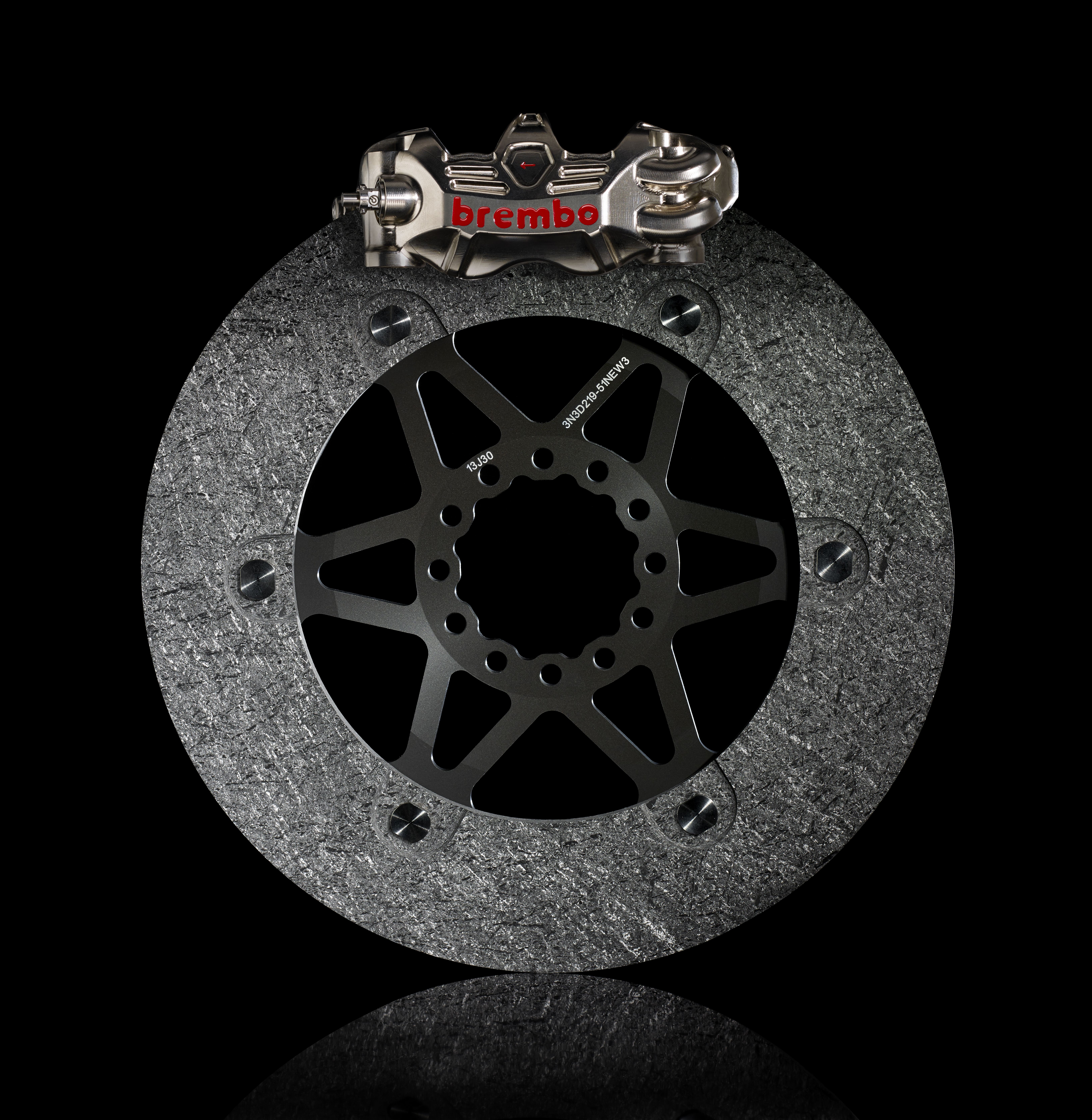The most demanding braking sections
Of the 11 braking sections on the circuit, three are considered very demanding on the brakes, three are of medium difficulty and five are light.
The corner that puts the most stress on the braking systems is turn 16, which is preceded by a 968 meters (0.6 miles) straight.
The MotoGP bikes go from 344 km/h (214 mph) to 148 km/h (92 mph) in 4.1 seconds while traveling 253 meters (830 feet). The riders apply a load of 5.6 kg (12.3 lbs).
They undergo a deceleration of 1.5 G and the pressure in the HTC 64T Brembo brake fluid reaches 12 bar.
The gap in speed lost at the first turn after the finish line is slightly less: 198 km/h (123 mph), starting from 289 km/h (180 mph) and going down to 91 km/h (57 mph), and more time is spent braking, 4.5 seconds. To brake like this the riders need 219 meters (719 feet) and have to apply a load of 5.3 kg (11.7 lbs).
The Superbikes, on the other hand, put an 5.8 kg (12.8 lbs) and a 5.2 kg (11.5 lbs) load on the lever at these two corners, respectively.
The effort required in braking at turn 12 is also worth noting: the bikes go from 274 km/h (170 mph) to 95 km/h (59 mph) in 208 meters (682 feet) and 4.5 seconds, and the brake fluid pressure reaches 10 bar.

